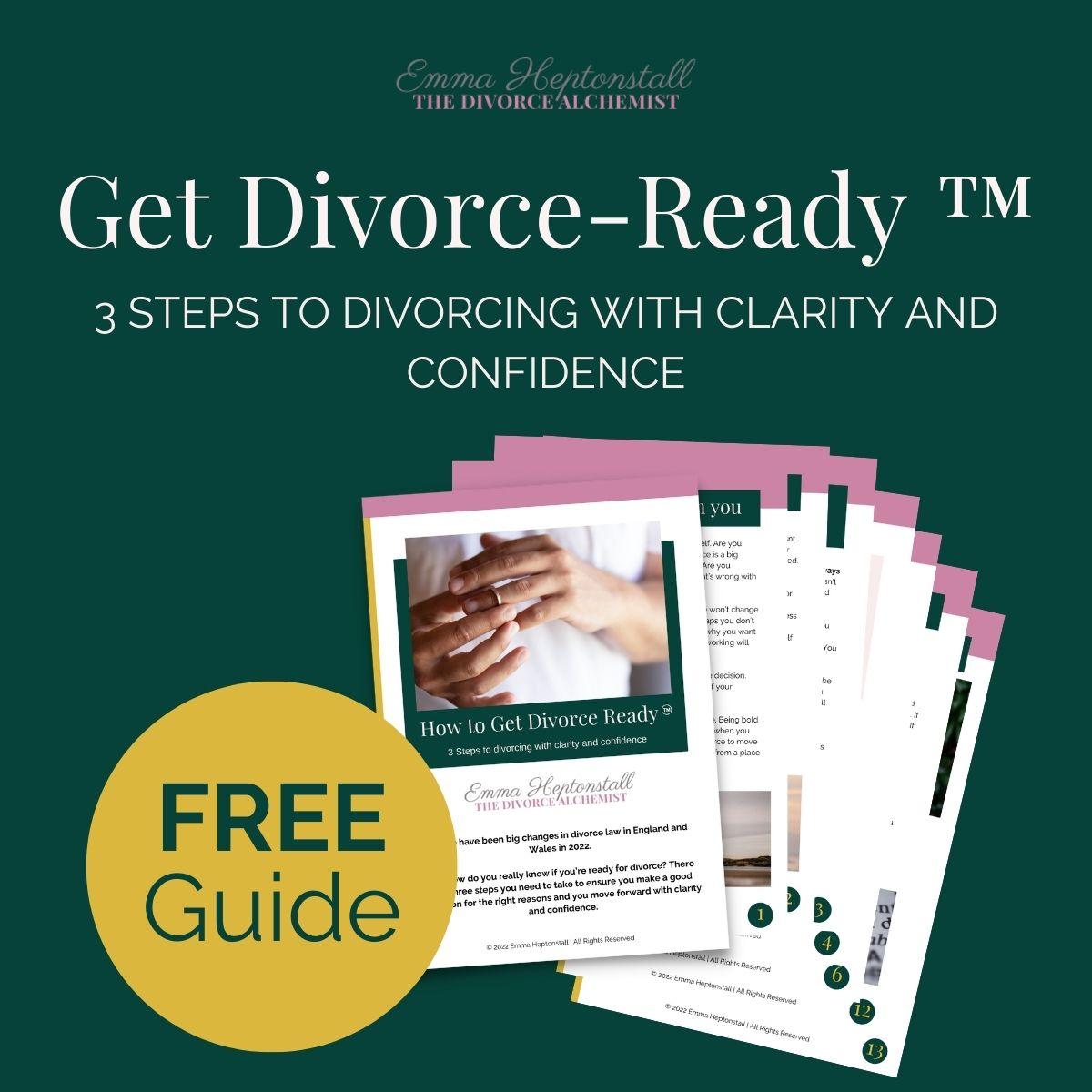Financial Remedies Courts Good Practice Protocol
Money is a hot topic when it comes to divorce – alongside arrangements for the children it’s something that often sparks arguments and power struggles.
You may think it’s inevitable you’ll end up in court when it comes to your financial settlement. That’s not necessarily the case. You are free to use mediation and lawyer negotiation to help you reach an agreement. This is often the cheapest and quickest way to do things if you can. If you come to your own arrangements you don’t need the courts to decide for you. But you’ll still need an order to finally end your financial obligations to one another in life and death through a consent order.
If you do need to use the courts, it’s worth knowing the process, and the rules they are bound by. A starting point is laid out in a rather dry, but necessary, document called the Financial Remedies Courts Good Practice Protocol.
This blog explains more about the Financial Remedies Courts Good Practice Protocol and some other legal terms relating to financial settlements. Whether you end up reaching an agreement outside the courts, or through a court order, it’s important to understand how things work. As with so much in life, forewarned is forearmed!
What’s a Consent Order?
Let’s start with the consensual, amicable route, which is what most people aspire to. Remember, however, that consensus and mediation is NOT a safe option if you’re in a high conflict situation with a narcissistic personality type. Read more on how to handle that here.
A consent order is made when you and your soon-to-be-ex have reached agreement on the financial aspects of your divorce. Not everything that you agree is capable can be encompassed in a legally binding order though. This is in part because the courts don’t have statutory power to make some of your agreements legally binding in the order. It’s also because not everything’s fully within your control. For example, you and your ex may have agreed to sell the marital home within a certain time, say six months of the order. But what happens if the housing market’s completely flat?
To allow for this the consent order may contain recitals (details outlining the basis on which the order is made). It may include undertakings (promises to the court and the other person to do something). The orders will deal with things like property, pensions, bank accounts and periodical payments (spousal maintenance), lump sums, school fees and agreed payments towards the children. The consent order cannot deal with contested child maintenance.
Clean break, delayed clean break and life orders
As well as making arrangements clear the consent order will set out future financial liabilities between you and your ex. There are different options. All financial obligations may end immediately (known as a clean break). They may order a delayed clean break in which on-going payments are time-limited (this can be the case where dependent children are involved, for example) or allow for ‘life orders’ (which will be case-specific). In negotiating a clean break, your legal teams will follow the directions set out in the Financial Remedies Courts Good Practice Protocol, as well following Statute (the Matrimonial Causes Act 1973 is the main one) and relevant case law.
Financial Remedy Orders
If you don’t reach agreement as to how to separate your assets, you’ll be asking the court to make a Financial Remedy Order. This means that the judge will make decisions for you. Only 9% of cases currently get to this point so even if you end up filing Form A and going to an FDA (First Appointment). This will be followed by an FDRH (Financial Dispute Resolution Hearing). It doesn’t mean that you’ll end up in a Final Hearing. The courts encourage you to reach an agreement yourselves all the way along the process. A Final Hearing, in which they make a legally-binding decision on your behalf, as the last resort.
Again, here your legal team (if you have one) and the judge will follow the Financial Remedies Courts Good Practice Protocol and even if you are representing yourself, you will be expected to understand your obligations.
Financial Remedies Courts Good Practice Protocol
So what is the Financial Remedies Courts Good Practice Protocol anyway? It was introduced in 2019 to standardise the way in which financial remedy cases are dealt with around the country. The digitisation of the divorce process means that there is less need for court centres regarding the divorce process. This is because most applications are now handled online. But there will always be a need for court hearings in contested cases. How should these cases be dealt with?
The Financial Remedies Courts Good Practice Protocol guides us. They set out standardised arrangements for everything from the obligations of the judge, to recommended timing for the First Appointment. The rest of this blog summarises some of the main points in the protocol.
Allocation
Applicants are encouraged to complete an allocation questionnaire. Allocation in this instance relates to the level of judge who will hear your case. District Judges deal with standard cases in the Financial Remedies Court. More complex cases may be dealt with by a more senior judge with the title ‘LJ’. Only cases of significant complexity or multi-million pound divorces end up in the High Court. If this is your situation you will have a legal team and they will advise you whether they feel an application outside of the Financial Remedy Courts is merited.
First Appointment
The First Appointment shall be listed with a time estimate of 30 to 45 minutes. Complex cases may be listed for longer. This has no bearing on how long you may be at court, however. You could be there all day!
Accelerated First Appointments
If you and your soon-to-be-ex can agree draft directions that you would like the judge to make at the first appointment, you may apply for an accelerated appointment. This means the directions are requested of the judge in the absence of your attendance or input. Accelerated First Appointments will be the exception rather than the norm and your lawyer will discuss this with you if they feel it’s appropriate.
Questionnaires
Your Questionnaire (drawn up after exchanging Form E) should not exceed four A4 pages with 12 font and 1.5 spacing. Judges will not usually approve questionnaires which exceed this length – there is some leeway in cases where there has been extensive non-disclosure.
Position Statements
Position statements for the First Appointment should not exceed five A4 pages for the First Appointment, ten for the FDRH and fifteen for the Final Hearing. The Financial Remedies Courts Good Practice Protocol reminds us that they should be served on parties and sent to the court by 2pm the day before the hearing if emailed, or by 11am on that day if sent in hard copy.
Agreed Asset Schedule
It won’t always be possible to agree an asset schedule, but lawyers are encouraged to work together to achieve this. If you are self-representing, your ex’s lawyer may approach to agree this schedule.
Orders at court hearings
Throughout the court hearing process, the court will make various orders and directions. If either you or your ex are represented, the court will expect that these orders are drafted and agreed prior to you leaving court or in any event within two days. This may not be possible if one of you needs to seek legal advice but you must do so swiftly so that orders can be drafted and filed.
Wellbeing
The protocol sets out working hours guidelines to safeguard everyone’s wellbeing. Unless necessary, court hearings will take place between 10 am and 4.30 pm. There is no expectation that any email sent after 6 pm will be responded to before 8:30 am the following morning. Unless urgent, do not email outside of these times nor feel pressured to respond. Many email software systems such as Outlook and Gmail allow you to draft and schedule the sending of an email so if for your own convenience you do need to draft an email outside of these hours, schedule it.
Out of court resolution
The Financial Remedies Courts Good Practice Protocol continues to support alternative dispute resolution such as mediation, and the use of arbitration and private FDRs if they are appropriate for parties.
Getting Divorce Ready
It can feel daunting getting to grips with legal jargon, but it’s all part of the divorce process, and far less scary once you actually do it. If you want help understanding some more common terms, take a look at my A-Z of divorce jargon here.
Getting Divorce Ready includes understanding the Financial Remedies Courts Good Practice Protocol. Even as a litigant in person, you will be expected to comply with the expectations of the court. When you understand the process and procedure your confidence builds. Does it stop nerves? No. You’ll still be nervous and nerves aren’t a bad thing. They show you care. They show that you’re taking this seriously.
Getting yourself ready means doing your due-diligence. It means taking advice from the right people at the right time. You learn quickly who you can trust and you don’t bury your head in the sand.
Getting support
Using a divorce coach can really help. Joining a group programme can support you even further. Often it’s better (quicker, easier, less painful, even fun and rewarding!) to work through this with someone else. To know you’re not alone, and it doesn’t have to be overwhelming.
This is why I’m running the Get Divorce Ready online programme again in April. It walks you through everything you need to know, do and consider to get your divorce done. Many women actually navigate the divorce process in real-time as they work through the programme. Payment plans will be available so you can spread the investment if needed. As a member, you’ll also get access to The Absolute Academy for 3 months!
Emma Heptonstall, the Divorce Alchemist is author of the Amazon best selling book How to be a Lady Who Leaves, the Ultimate Guide to Getting Divorce Ready. A former lawyer, Emma is a family mediator and founder of Get Divorce Ready the online self-study and group programmes. Emma has been featured on BBC Radio, The Telegraph, the iPaper and in Marie Claire Magazine. To find out more visit www.emmaheptonstall.com






0 Comments